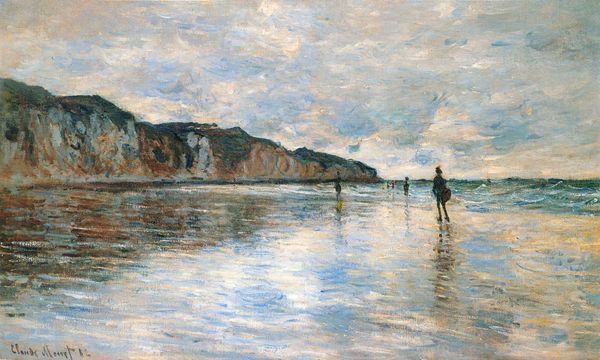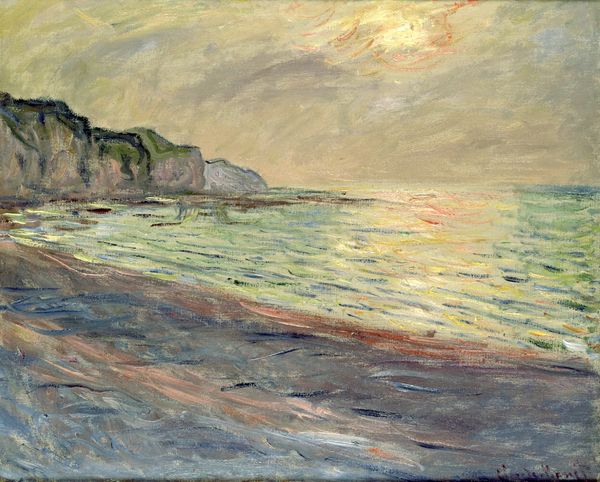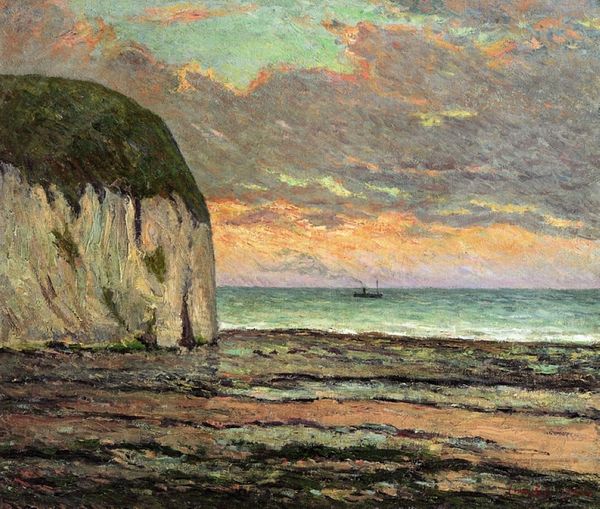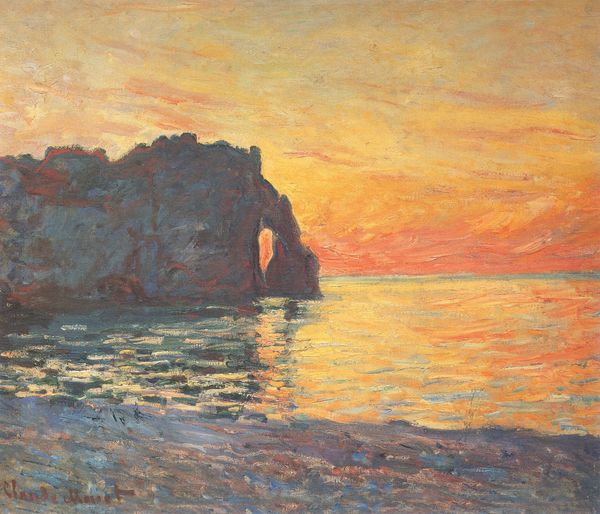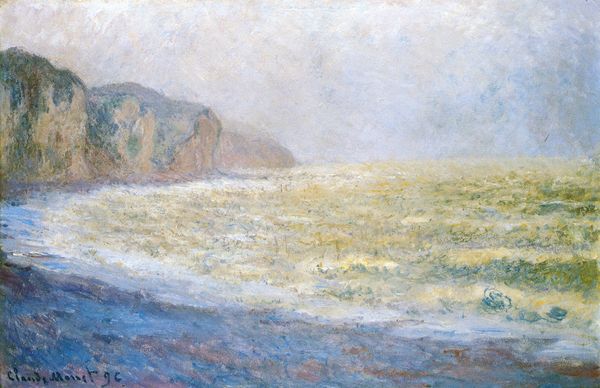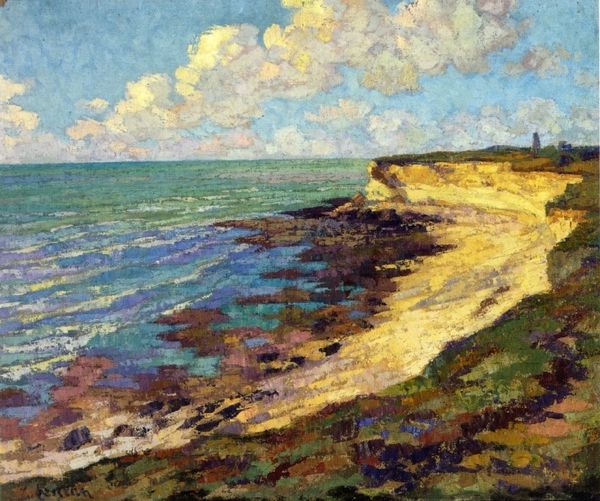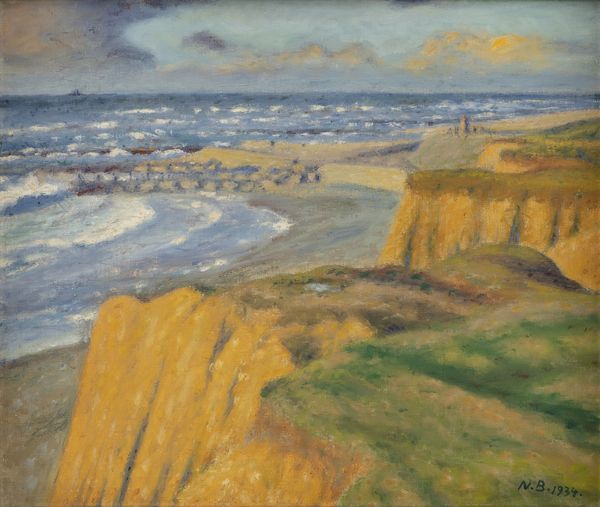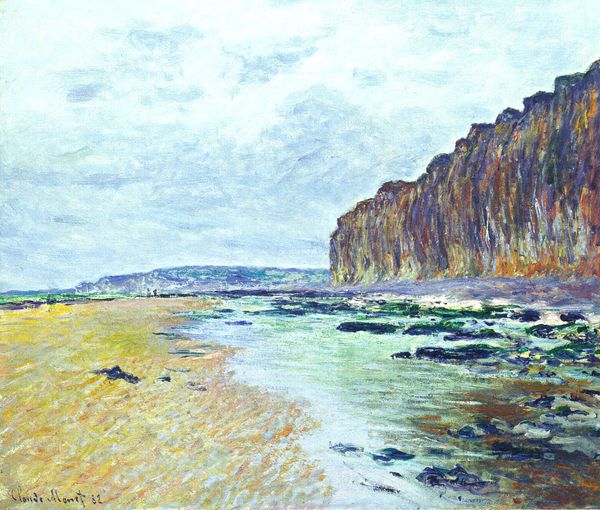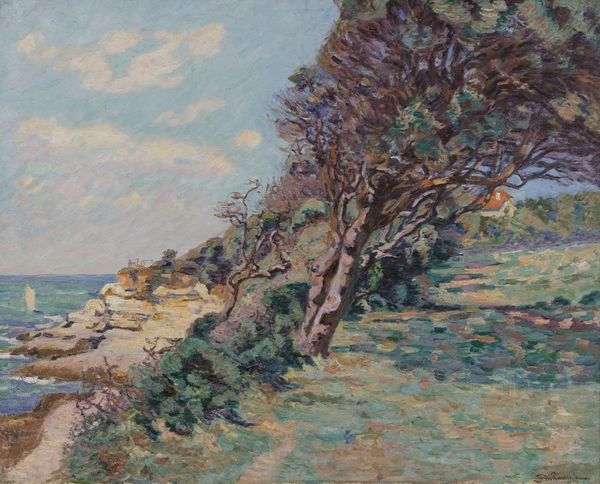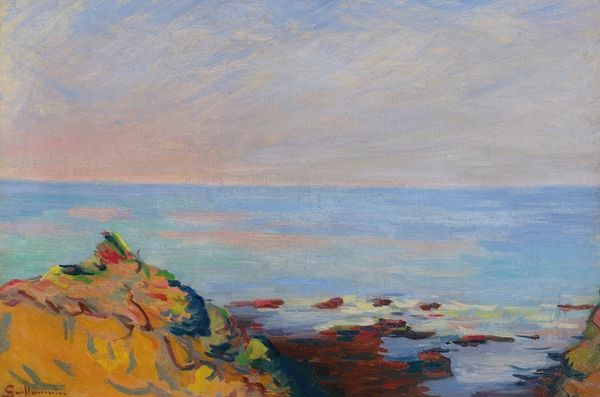
Copyright: Public domain
"The Ally Point, Low Tide" was painted by Claude Monet in France, using oil on canvas. Here, we see that the material qualities are crucial. Oil paint allows Monet to capture the shimmering, fleeting effects of light on the water and sand. Notice how he applies the paint in short, broken strokes, a technique he developed over years of careful observation. It is clear that Monet’s work involved a highly skilled practice, deeply rooted in the tradition of representational painting. But Monet was an innovator, too. He took this tradition and turned it towards a new purpose. Instead of using paint to create a photographic likeness, he explored the subjective experience of seeing. Monet’s art was made possible by the industrial revolution. The mass production of paint in tubes allowed him to work outdoors, directly responding to the landscape. So, consider the importance of materials, process, and context. These are key to understanding the full meaning of this deceptively simple artwork.
Comments
No comments
Be the first to comment and join the conversation on the ultimate creative platform.
